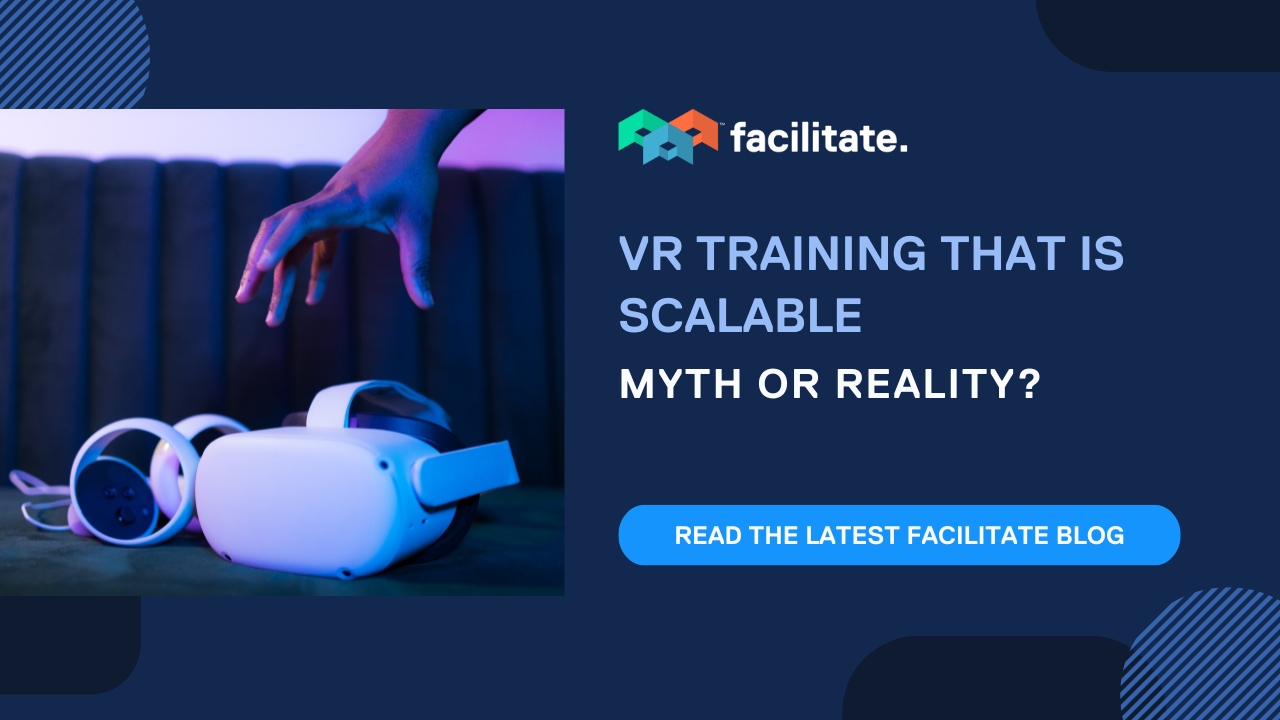VR Training That Is Scalable: Myth or Reality?

The Challenges of Scaling VR Training
Many organisations have successfully implemented VR training as a proof of concept, experiencing early wins in engagement, knowledge retention, and experiential learning. However, scaling VR training beyond the initial pilot phase has proven to be a significant challenge.
Common obstacles include:
- High content creation costs – Many organisations begin with custom-built VR experiences developed by external agencies. While these provide great initial results, they are expensive to scale.
- No clear path to internal content ownership – Relying on external agencies means organisations don’t develop the skills needed to create or manage their own VR training content.
- Lack of expertise in managing VR hardware at scale – Deploying and maintaining a fleet of VR headsets across multiple locations can be daunting without the right strategy and tools.
Why Scalability Requires Internal Capacity
For VR training to be truly scalable, organisations must develop an internal capability to create and maintain VR content. Relying on external agencies for content creation presents several challenges:
- High costs of external content development – Custom VR content built by agencies can cost tens or even hundreds of thousands of dollars per module.
- Ongoing maintenance costs – Any updates or modifications to externally built content require going back to the agency, adding further costs.
- Agencies charge by the hour – Even minor tweaks or content adaptations can be expensive and unpredictable in cost.
- Lack of agility – The turnaround time for changes is often slow, making it difficult to keep content up to date with evolving training needs.
The result? A significant portion of an organisation’s L&D budget gets consumed in maintenance costs of existing content, leaving little room for new training initiatives.
The Only Real Solution: Internal XR Content Creation
The most effective way to scale VR training is by developing an internal capacity for XR content creation. This approach:
- Eliminates dependency on agencies – Organisations can build and update their own content as needed.
- Reduces costs significantly – Internal teams can create multiple training modules at a fraction of the cost of agency-built content.
- Improves agility – Training content can be updated or modified instantly without long waiting times.
- Ensures long-term sustainability – Investing in internal skills and tools futureproofs an organisation’s ability to expand VR training across different use cases.
The Future of Scalable VR Training
For enterprises serious about leveraging VR for training, self-authoring and internal XR content creation are no longer optional—they are essential. By investing in the right tools and training their L&D teams, organisations can unlock the full potential of VR training, ensuring it remains cost-effective, scalable, and impactful in the long term.
VR training at scale is not a myth—it’s a reality for those who take ownership of the process.
Have questions or want to learn more about how you can get started with Facilitate?
Get in touch with our VR experts today.
